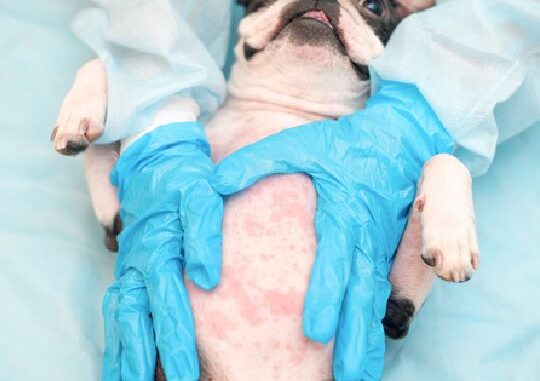
This article was updated on February 6th, 2024
One of the most common and distressing medical issues that dogs face is skin allergies and rashes: we see an average of 10 dogs a week with skin allergies in my veterinary practice. In the hot months, this number increases. Not only are the dogs miserable, but the owners are also!
Common skin issues that can be caused by allergies (with pictures)
Allergies make dogs feel very itchy and uncomfortable, so they often lick and scratch their skin excessively. This can harm their skin and lead to more serious skin problems. The two most common signs of allergies in dogs are:
- scratching (indicating itching) and
- redness of the skin.
Affected dogs may scratch their ears and body with their hind feet, lick their legs, paws, and abdomen, or rub their heads and bodies on the floor:


Often dogs exhibit these uncomfortable signs constantly and may have trouble getting comfortable or sleeping. Depending on the cause of the allergy, dogs may experience the following skin issues:
1. red inflamed skin

2. bumps
3. Scabs and bald patches
The picture below shows the skin of a dog suffering from allergies, with crusty lesions, bald patches and skin redness. Lesions are caused by scratching, chewing and licking and these actions often lead to secondary infections:
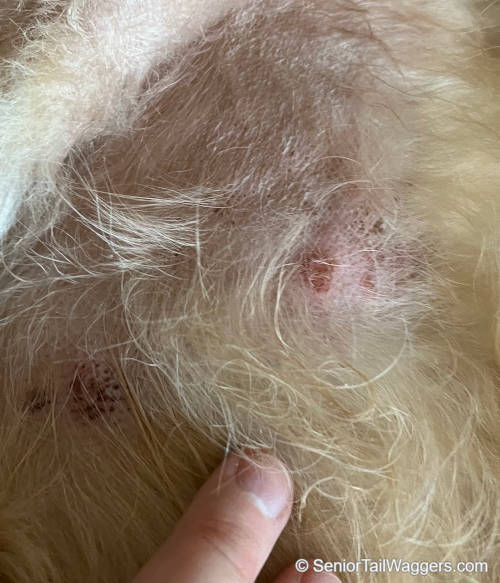
4. Collarettes
Collarettes are circular areas of skin irritation that can appear flaky or crusty.
5. flaking skin
Allergies in dogs can lead to flaky skin by causing irritation and dryness, disrupting the natural oil balance of their skin.
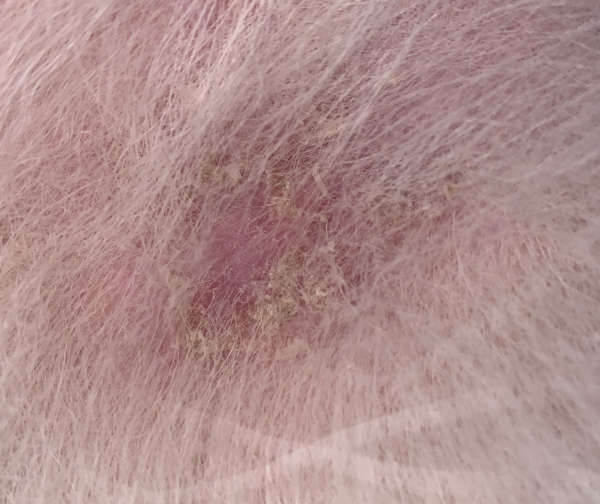
6. Hives
Hives in dogs can occur due to insect bites or stings, medication reactions, or environmental allergies. They appear as raised, small areas on the skin and coat.
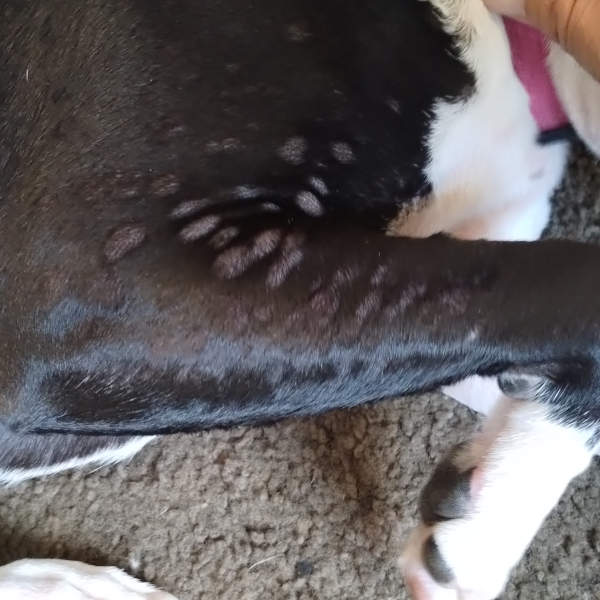
Some dogs may also show the following signs:
7. salivary staining. Allergies in dogs can cause saliva stains on fur due to excessive licking of irritated skin.
8. thickened skin,
9. moist, weeping skin.
10. red or irritated eyes. Dogs with allergies can also have red, swollen or irritated eyes as shown in the pictures below:
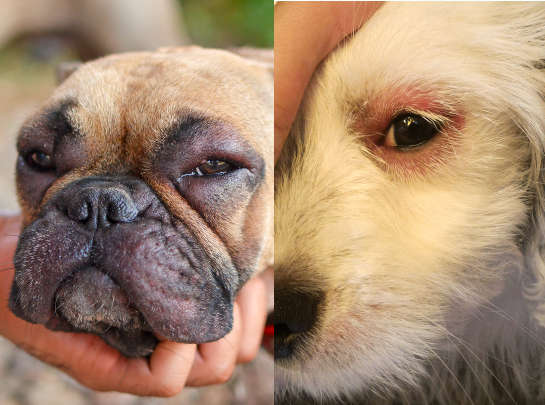
Types of allergies & allergy bumps and rashes
Allergies can cause various types of bumps, scabs, and rashes on a dog’s skin. Their appearance can often give clues to the cause of the allergy. Here are some pictures to help you identify different types of allergies and allergy-related skin issues in dogs:
1. Moist Dermatitis (Hot Spots)
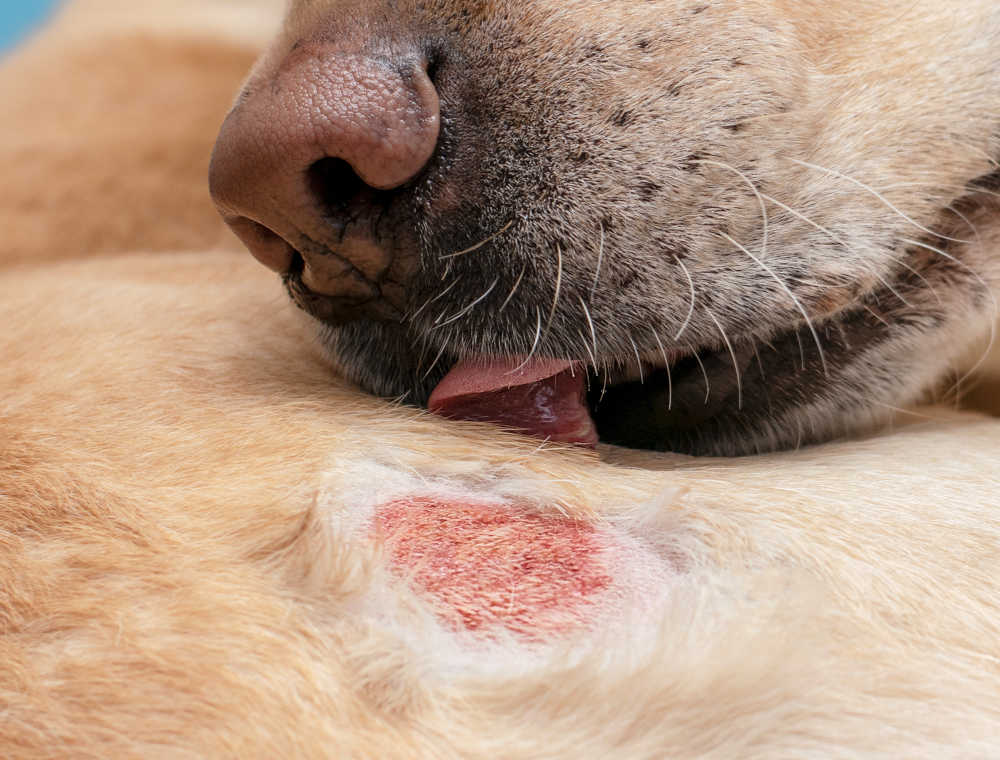
Hot spots, technically known as acute moist dermatitis, are red, inflamed areas of skin that can seem to appear overnight. These spots may occur anywhere on a dog but are most common behind and under the ear and on the hips.
The area will be moist and typically have some purulent oozing. Often there is matted fur covering and hiding the hot spot. Though not life-threatening, these lesions can make dogs absolutely miserable.
If your dog has a hot spot, you need to take them to see their veterinarian as soon as possible. In the meantime, you can try putting an Elizabethan collar on them to keep them from further traumatizing the hot spot, as well as a soothing topical such as Benadryl cream.
View more pictures of hot spots (with veterinarian advice and treatment information).
2. Hives (Urticaria)
Like hot spots, hives are caused by an allergic reaction and manifest symptomatically in the skin. Hives in dogs are often the result of an insect bite or sting, a reaction to a medication, or an environmental allergy. Hives appear as small, raised areas in the dog’s skin and coat. Hives can be widespread all over the body or confined to a smaller area.

If your dog is exhibiting hives, check their face for swelling and ensure they are breathing normally. If the only sign of the allergic reaction is hives, you should make an appointment as soon as possible with a veterinarian and keep a close eye on your dog. If the dog is also exhibiting facial swelling, difficulty breathing, lethargy, or vomiting, they must be taken to the nearest veterinarian immediately as these are signs of anaphylaxis and can be fatal if left untreated.
Treatment for hives will depend on the severity of clinical signs that your dog is exhibiting, their history, the possible allergen, and their current health status. Typically treatment consists of corticosteroids and antihistamines, but intravenous fluids and other supportive measures may be necessary.
View pictures of hives with tips for treating hives at home.
3. Allergies to the environment (grass, trees, flowers, pollen, and more)

Dogs may develop skin lesions or sores as a result of allergies to environmental substances (known as Atopy/Allergic dermatitis). Their immune system tends to overreact to an airborne allergen present in their surroundings. These allergens can range from grass, trees, flowers, pollen, and other substances.
Even if your pet doesn’t come into direct contact with the offending allergen, for example, if you don’t have grass in your yard at all, the allergens can still affect them because they are present in the air.
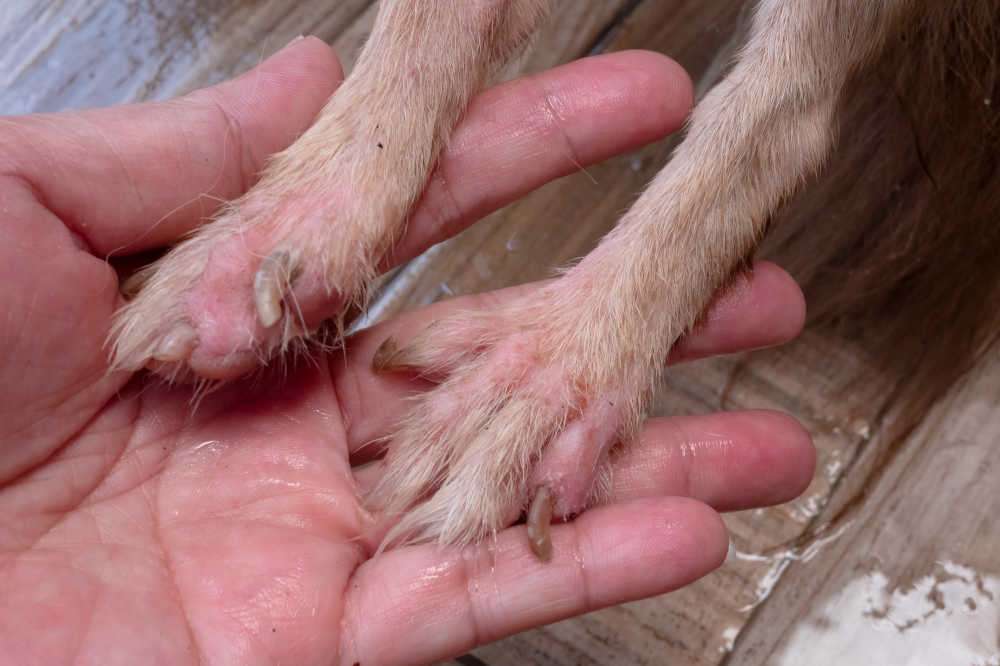
These allergies are typically genetic and appear for the first time between 1 and 3 years of age. However, a move to a new area may trigger allergies in an older dog. The signs are most commonly observed seasonally, meaning they come and go throughout the year as the allergens in the environment change.
Diagnosing atopy can be difficult. Though the signs may point to an allergy, deciphering the offending substance can be nearly impossible because these allergens are typically airborne. Allergy testing is available through board-certified veterinary dermatologists in the form of skin prick testing.
There are many strategies for treating atopy. First, any current skin infection needs to be treated. Then your veterinarian will prescribe medicines, supplements, and shampoos that are appropriate for your individual dog. Some trial and error is typically involved in finding out what works the best for your dog. It is very important to remember that allergies in dogs, like humans, are never cured, only managed.
If you cannot see your veterinarian right away, call and ask them about temporary comfort measures such as over-the-counter oral antihistamines and shampoos. Never give your dog any medication without your veterinarian’s approval.
Learn more about Environmental Allergies.
4. Food allergies
Food allergies in dogs present differently than environmental allergies. Food allergies tend to manifest as redness or bumps on the dog’s abdomen or gastrointestinal issues such as diarrhea.
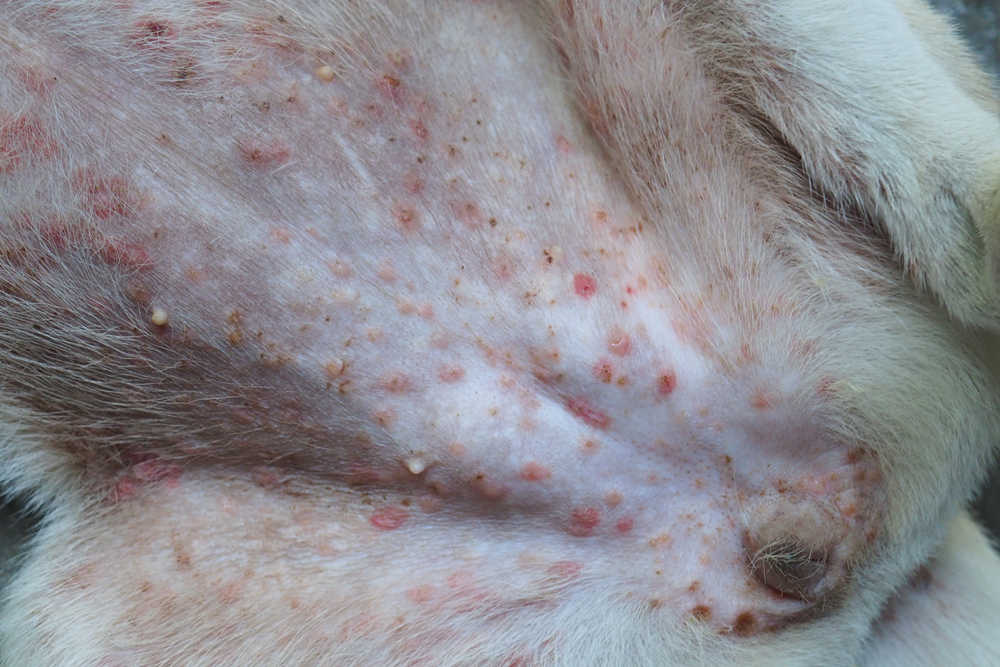
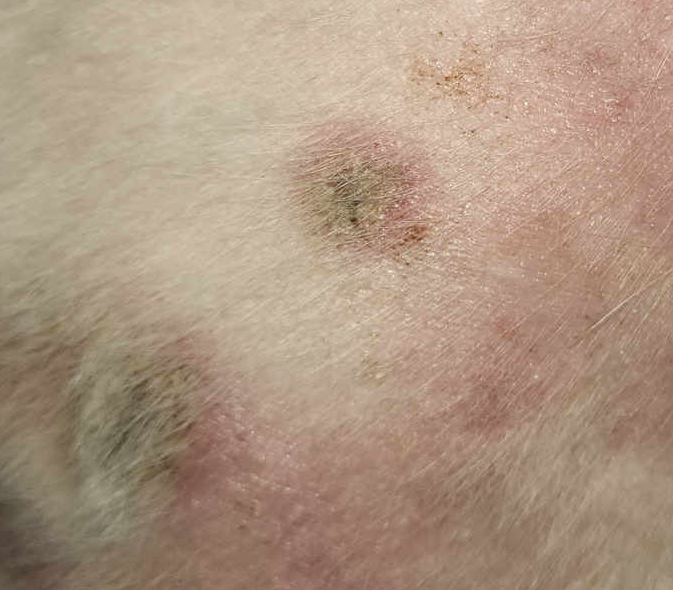
Another distinguishing feature is that food allergies tend to occur year-round, in contrast to atopy, which is typically seasonal.
To diagnose a food allergy, your veterinarian will have you feed either a nonallergenic, hydrolyzed or a novel protein diet to your dog for at least eight weeks. This is called a food trial. It is essential not to feed our dog anything else during this trial, including treats and flavored medications. It may take the entire eight weeks to see a difference, so do not stop early.
These foods are available by prescription from your veterinarian. Once the dog has ceased showing allergy signs, your veterinarian may have you slowly add in new proteins and foods to see what triggers the dog’s signs. Contrary to many popular myths, beef, chicken, and dairy are the most common food allergens in dogs [Reference 1].
Costs to diagnose and treat food allergies may include treating the itching and skin infection that may be present and a diet for a food trial. These costs may range from $100-$300.
If you cannot see your dog’s veterinarian immediately, you can try changing their food and seeing if the signs of food allergy resolve. However, many over-the-counter foods may be contaminated with unknown allergens, and guessing about different proteins can be expensive and time-consuming.
Learn more about Food Allergies.
5. Flea allergies
Fleas cause all dogs to bite and scratch themselves. However, some dogs are truly allergic to fleas and may have an allergic reaction to the presence, even if fleeting, of a single flea. Flea allergy dermatitis typically presents as a red, inflamed, and scabby hind end, just above the tail head.
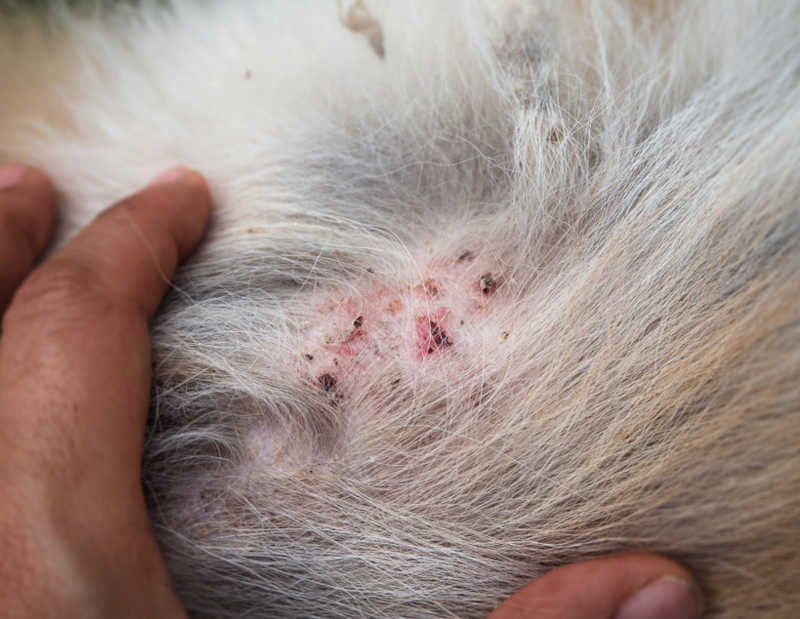

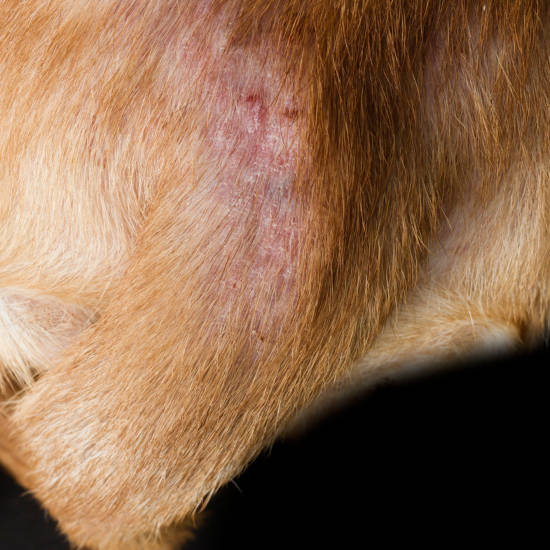
Fleas may or may not be seen. The number one clue that your dog has fleas is excessive scratching, licking, or chewing.
Treatment for flea allergy dermatitis consists of immaculate flea control, antibiotics for secondary infections, and anti-inflammatories. Costs typically range from $100-$300.
Over-the-counter flea, preventatives are available but are often ineffective, including flea collars. Flea collars tend to rid the dog of fleas on their neck but not in other areas. Reactions are also common with these over-the-counter collars. Ask your veterinarian which flea preventative is best for your dog.
View more pictures of flea allergy issues.
How do you figure out what is affecting your dog’s skin?
Diagnosis of skin allergies, bumps, and rashes in dogs will depend on the dog’s clinical signs and history. Necessary diagnostics at the vet may include:
- skin scrapings,
- tape preparations,
- biopsies,
- allergy testing, and
- food trials.
Your veterinarian has years of experience with diagnosing these conditions and can help you to make a diagnostic and treatment plan.
FAQ about treating skin allergies
What is the fastest way to cure skin allergy bumps and rashes?
Dogs with skin allergies, bumps, and rashes are often miserable, and their owners want to help them as quickly as possible. With so many varied causes of these issues, the best way to address them quickly is to see your veterinarian. Getting a correct diagnosis will ensure proper and timely treatment.
What is the prognosis of skin allergy bumps and rashes in dogs?
Skin issues in dogs are rarely life-threatening, but they can ruin a dog’s quality of life. The prognosis, with proper treatment, for most conditions is good. However, keep in mind that many of these issues, such as allergies, are not curable and will require lifelong management.
How long does it take for dog allergy symptoms to go away?
With proper and timely treatment, most dogs should begin to feel better within a few days. The major exception to this is the case of food allergies, which can take weeks to resolve.
How can I treat my dog’s skin allergy at home?
Unfortunately, dogs are not small humans, and allergy medications, such as antihistamines, that give us relief from allergies are not typically effective in dogs. Bathing with soothing shampoos and ensuring your dog is protected from fleas can be helpful.
What dog food is best for skin allergies? Are there home recipes that would work well?
Food is only a concern for dogs with true food allergies, though there are supplements that may help dogs with other skin conditions, such as Omega-3 fatty acids. In food-allergic dogs, you must keep the offending allergen out of the dog’s diet. This is most easily accomplished by feeding commercially prepared nonallergenic or novel protein diets. If you desire to cook for your dog at home, make sure you are offering a complete and balanced diet. I recommend utilizing the board-certified veterinary nutritionists at www.BalanceIt.com for formulation.
What should you avoid if your dog has skin allergy issues?
The first step to preventing skin issues in dogs is finding out what skin issue your dog suffers from. Then, there are preventative measures, such as flea control, food, supplements, and medications that can keep the issue under control.
If your dog is prone to skin issues, you should make sure to:
- keep them clean at all times
- keep them well-groomed
- avoid certain areas and activities, such as dense grass or swimming, if they affect your dog’s allergies.
Can you treat skin allergy bumps and rashes without going to the vet?
Because there are so many varied causes of skin allergies, bumps, and rashes in dogs, it is not a good idea to try to treat your dog at home. Treating the dog incorrectly will not only prolong the time that they suffer but may actually make the issue worse, resulting in higher veterinary bills in the long run.
Can I get antibiotics for my dog without seeing a vet?
No, antibiotics are prescription medications and should only be used under the direction of a licensed veterinarian. All antibiotics are not the same. These drugs treat different things, and it is imperative to get the correct medication and dose for your dog and their illness. Incorrect use of antibiotics leads to resistance and superbugs and is dangerous for both you and your dog.
What is the cost of treating a skin allergy in dogs?
Average costs incurred for treating skin issues in dogs range from $100-$1,000 but are highly variable and depend on the necessary diagnostics and treatments. Remember that allergies are a lifelong condition and will require long-term maintenance and treatment.
Are treatments covered by insurance or out of pocket?
For dogs that are covered by pet health insurance, many plans do include coverage for the diagnostics and treatments needed for skin issues. However, each plan has different exclusions, and pet health insurance plans rarely cover pre-existing conditions.
What causes skin allergies in dogs?
There are many different reasons why your dog may be itchy and have a rash, and it is imperative to find the underlying cause so your dog can find relief with the right treatment. In this article, we will solely focus on allergies that manifest in the skin, such as environmental, food, and flea allergies. Other top reasons for red skin issues or rashes include:
- Bacterial infections
- Yeast infections/fungal infections
- Mange
- Autoimmune diseases
- Endocrine diseases
- Poor hygiene
When to visit an emergency vet
If your dog is bleeding, lethargic, not eating, has a fever, or is extremely uncomfortable, it may be prudent to take them to an emergency veterinarian if you cannot see their regular veterinarian right away.
Other FAQs
Can I get a rash from my dog?
There are some diseases, such as ringworm and sarcoptic mange, that are contagious to humans. If you have concerns that you have contracted a rash from your dog, the dog needs to be seen by their veterinarian, and you should contact your physician.
Does apple cider vinegar help dogs’ itchy skin?
No, in fact the acidity may actually burn and further irritate the skin, leading to more serious issues and increased scratching and discomfort.
[Reference 1] Mueller, R.S., Olivry, T. & Prélaud, P. Critically appraised topic on adverse food reactions of companion animals (2): common food allergen sources in dogs and cats. BMC Vet Res 12, 9 (2016). https://doi.org/10.1186/s12917-016-0633-8
Related posts:
Disclaimer: This website's content is not a substitute for veterinary care. Always consult with your veterinarian for healthcare decisions. Read More.




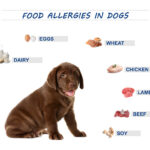
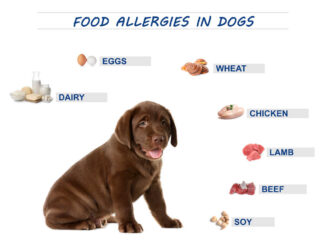


Thank you so much for the information , I have learned plenty, however my Boston Terriers problem is not listed, what he has is every two or three days a round, light blister-looking -like shows pup and it dries in a day or two ,it appears just like a cigarette burn, he’s not scratching and he doesn’t lose hair at that spot however recently one of the spots had a crust that fell after drying in about three days.
Hi Liliana and thank you for this question about your Boston Terrier.
If this lesion is consistently in the same place and he only has one single lesion, I’d be wondering about e.g. a cyst (which may fill up with fluid and empty), a lesion or scab which he is rubbing or scratching before it fully heals, a bast cell tumour (these can shrink and grow).
Certainly worth having it looked at by his vet, to determine exactly what it is and if any therapy is needed (such as a medicated wash or course of antibiotics).
Do make sure he does not lick, chew or rub at the spot when it appears. I’d consider bathing it in dilute Hibiscrub or salt water.
“The information on this website is not a substitute for in-person veterinary care. Always seek advice from your veterinarian if you have concerns about your pet’s medical condition.”